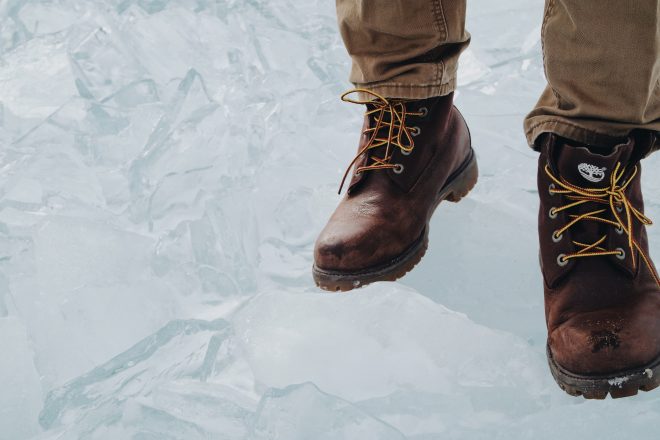When that first snowfall hits, many of us scramble to unearth last year’s winter boots from the back of the closet. If you’re realizing they’re a bit tired, it may be time to hit the shoe store for a new pair—but first, here are some tips from Sherwood Park-based chiropractor Dr. Taylor Cooksley on choosing a winter boot that won’t just provide protection from the elements—it will protect your joint health too.
Why does choosing the right boot matter?
“Foot pain doesn’t just start and end in the foot—it can be the source of much bigger pains in your body.”
Dr. Cooksley has seen first-hand the impact that untreated foot conditions can have. “When patients come in with foot pain, just based on my assessment I can usually predict what other issues are going to present themselves in the future if they haven’t already,” she explains.
Foot pain is often the culprit for things like hip or lower back pain, which is why it’s so important to be assessed by a chiropractor to ensure you’re treating the correct pain source. Choosing the correct shoe is the first step in ensuring you are looking after your overall joint health.
What should you be looking for?
“When you think about proper footwear for winter, you probably think of good grip. While grip is essential, it’s just on piece of the puzzle.”
Comfort
First and foremost, you need to find a winter boot that is comfortable. You should be able to walk in the boot for long periods of time and not feel any points of rubbing or tightness. Pay close attention to the way your heels and toes feel—any points that feel like they’re rubbing against the shoe can create problems down the line.
Wide spacing
The second thing to look for is a boot that’s a bit wider than your typical shoe. Because of the cold, you’re likely going to be wearing thicker socks, so you need extra room for your foot to move around. Having a shoe that’s too tight is going to create stiffness in your foot and can lead to various conditions like bunions, plantar fasciitis and hip and back pain.
Cushioning
Lastly, pay attention to how your foot feels in the shoe when you walk. Your foot should feel supported and cushioned. Be sure to flip the boot over and check the tread—does it physically raise off the sole or is it flush? Raised tread is going to give you more grip and stability in the winter, minimizing the risk of slips or falls.
How can a chiropractor help?
Chiropractors are specially trained in diagnosing and treating musculoskeletal-related conditions, which includes your feet. If you’re experiencing pain when you walk, a chiropractor can assess the pain and recommend a treatment plan.
What are orthotics?
Orthotics are insertable soles for your shoes that can provide more cushioning, comfort and support to your foot.
You’ve likely seen orthotics at your local pharmacy or shoe store—these off-the-shelf orthotics typically provide you with more cushioning but don’t offer much support. Though these orthotics are good in a pinch, they aren’t usually a long-term solution.
Your feet naturally have slight variances in size and step which can create unique conditions in each foot.
If your right foot is bigger, you may experience more rubbing in your right shoe, leading to bunions or an altered step. If you naturally favour your right leg, you may experience more pain in that foot. Because your feet are not the same, store-bought orthotics won’t perfectly address each individual problem—that’s where your chiropractor can help.
Chiropractors will carefully assess each foot and custom design orthotics that will provide proper cushioning, comfort and support to each individual foot.
We hope that these tips help you to choose winter boots that will keep you comfortable and safe all winter long!
Originally posted at: https://albertachiro.com/ACAC/Chiropractic_in_Alberta/BLOG/What_to_look_for_in_a_winter_boot_and_how_your_chiropractor_can_help.aspx

